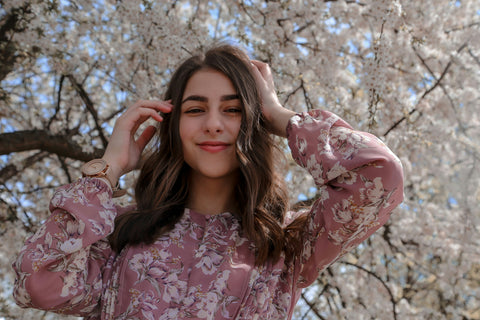Everything You Should Include in a Spring Photo Book

You can sum up a springtime photo book with one word: color.
While winter is a great time to push yourself as a photographer and find some brightness in the darkest of seasons, spring offers everything up on a platter. The sun is shining, the flowers are blooming, and the world is alive once again.
In every respect, it’s a perfect time to simply get out there and snap away. But just because spring offers everything to the photographer, that doesn’t mean every photographer takes it.
While you might already have some great spring photographs to upload to our photo book creator, there are likely a few stones you are yet to turn.
To help you out, we’re going to list out everything you need to include in a well-rounded spring photo book, ensuring you capture every essence of spring rather than just a handful of its ‘greatest moments’.
Blooming Flowers
As a photographer, it’s easy to get caught up in shooting intricate, interesting photos and start second-guessing what makes an engaging picture for the viewer.
Taking pictures of flowers, for instance, can feel a little boring. It’s been done before, of course. And while flowers as a subject are colorful, they don’t exactly tell a story.
But it’s important to remember that a spring photo book doesn’t have to tell a story. In many ways, this is the most aesthetic season of the year – full of spectacle and imagery, rather than intricacies or plot – so don’t be afraid to take flower photos that showcase color, no matter how ‘unoriginal’ they might seem.
Bustling Streets
In the same way, however, don’t go too full-on with the natural world and start neglecting the city streets. When we talk about spring being ‘colorful’, we’re talking about everything from aesthetics, to mood, to atmosphere, so try not to focus on one and forget about the other.
With the sun shining a little brighter, for instance, the outside world is starting to get busier. More people are out and about, meeting for coffee with friends or visiting bars at sunset, and this gives you the perfect opportunity to snap those stories you might have been worried about missing.
April Showers
There are many ways in which color presents itself during the spring. One of them is when the sky is overcast and the rain is falling, with the water helping colors to bounce and pop in the lens rather than feel a little flat or one-note.
Whether it’s using puddles and lakes for reflective photography, or utilising streams and waterfalls for a silky glare in your landscape shots, water can help your photographs come alive and make an impact.
Even if it hasn’t been raining, there are other ways in which you can incorporate water in your spring photography. Dew drops, for instance, are a frequent occurrence during this time of the year, with all of us waking up to wet and dewy backyards every once in a while.
This is a great opportunity to get out there and glimpse a whole new world, getting up close for macro photography or using dew drops to refract light and make surrounding colors glisten.
Spring Fashion
We mentioned earlier that you should focus on the city streets, and one of the ways you can do this is by taking pictures of the different styles people are wearing. While everyone is a little more concerned about warmth in the winter, springtime is when fashion becomes the number one priority again.
On the streets right now, everything from pastel greens to sky blues is on display, with more people starting to blend their style with the sunny atmosphere and radiate some bright positivity. We’re not saying that winter fashion is bad. Far from it. But there’s just something about spring fashion, with its stark popping colours contrasting with the grey city streets, that hits differently.
Awakening Wildlife
Photographing animals can be a pain, we know that. But because spring is so associated with blossoming flowers and burgeoning wildlife, it always feels like a photo book is missing something without them.
To avoid your spring photo book feeling incomplete, make 2024 the year that you get out there and capture wildlife up close.
This doesn’t have to be – notoriously difficult – photographs of squirrels or house sparrows, it can be macro photographs of ladybugs, dragonflies, or bees coming to pollinate – animals that don’t get freaked out when a human gets too close!
Using the rule of thirds, and perhaps some foliage to frame the subject, you can end up with some beautiful photographs that provide the finishing touch to a well-rounded photo book. All you need is a little patience, and the willpower to get out there and snap!





